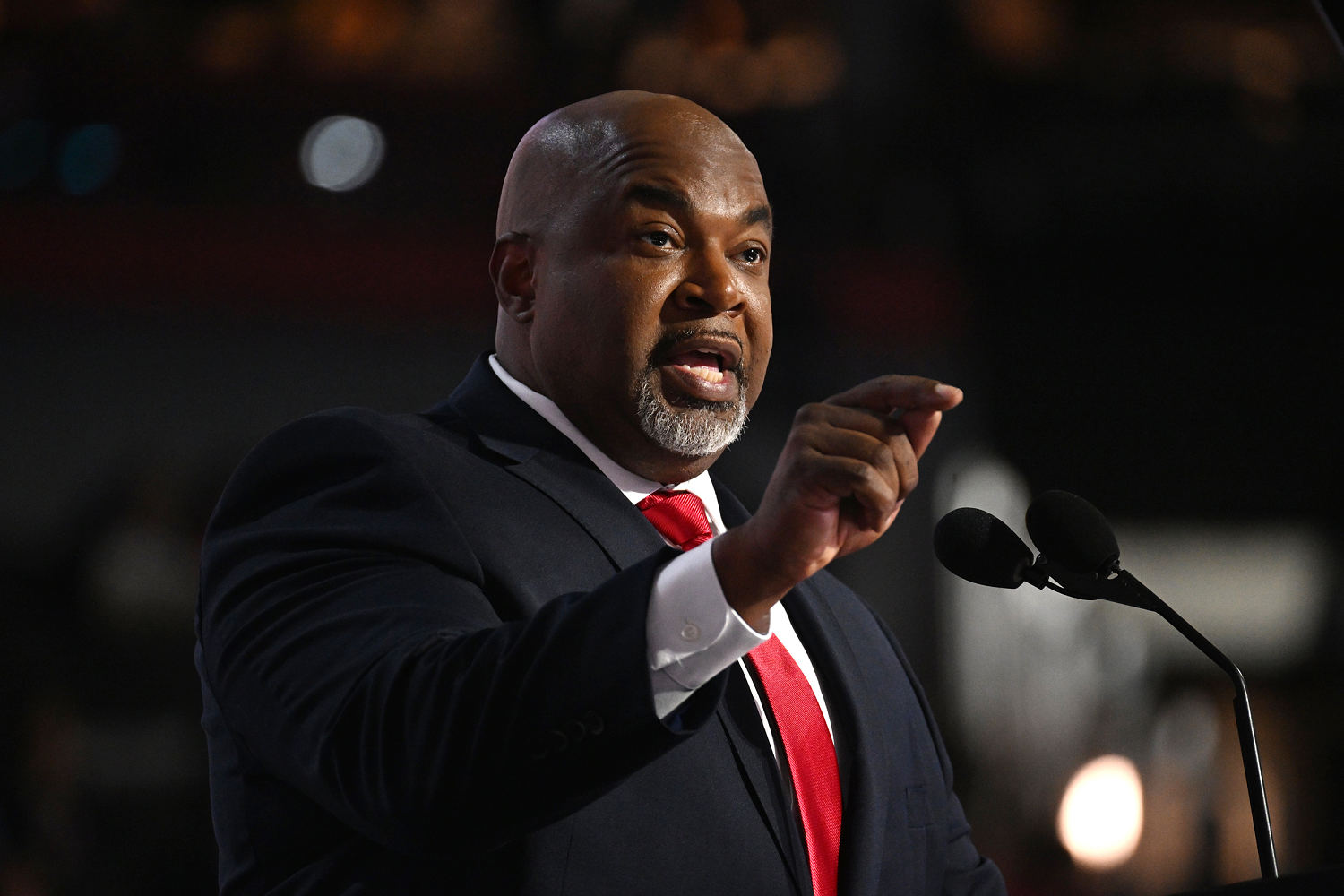It is a long-accepted political assumption that Americans don’t vote based on foreign policy. Even when voters are aware of global affairs, they rarely rate them as important factors in their vote.
And yet, while a recent Gallup poll showed that only 10% chose a foreign policy issue as their top priority, the parties are deeply divided between two foreign nations. The Democratic Party has mostly aligned itself with Ukraine, while many Republicans express sympathy for, if not outward allegiance to, Russia.
Of course, there are nuances within both parties, especially among leadership. But voters reflect this divide as well. Sixty percent of Democratic voters believe the U.S. needs to do even more to support Ukraine. Among Republicans who support Trump, 75% oppose Ukraine aid.
This divide between the parties has occurred once before and influenced the outcome of a presidential election. Over two centuries ago, the first two political parties in America declared their loyalties to warring foreign nations with dramatic electoral consequences.
Read More: Ukrainians Fear What J.D. Vance Could Do as Vice President
In the 1790s, the Federalists cozied up to Great Britain, while the Democratic-Republicans sided with France. These preferences aligned with the parties’ policy choices. The Federalists called for a strong federal government, a powerful army and navy, and investment in trade and industry. Britain served as the nation’s largest trade partner and possessed the world’s biggest navy. On the other hand, the Democratic-Republicans’ vision for the nation was based on the yeoman farmer with limited federal government and no standing army. They distrusted Britain’s monarchy, strong navy, wealthy central banking system, and monopoly of foreign trade. Accordingly, they were much friendlier to Britain’s longtime enemy, France.
These conflicting positions broke into the open in 1793 when France declared war on Great Britain, reigniting a centuries’ old battle. No longer were these debates theoretical. They now required taking sides in a deadly war.
President George Washington deployed the full weight of his unparalleled reputation to keep the nation neutral. But near the end of Washington’s presidency, French privateers began seizing neutral American ships carrying goods across the Atlantic Ocean. Washington retired a few months later, leaving his successor to deal with these provocations.
Read More: The Uneasy Alliance Between Kamala Harris and Volodymyr Zelensky
John Adams took the oath of office as the second President of the United States on March 4, 1797. His tenure would be dominated by the threat of war with France and the divide between the Democratic-Republicans and the Federalists over foreign policy.
A few months after Adams’ inauguration, he sent a peace commission to France to negotiate a new treaty. The American commissioners—John Marshall, Charles Cotesworth Pinckney, and Elbridge Gerry—arrived in Paris full of hope and good intentions. But when Americans received no news of their whereabouts or progress for over six months, both sides of the political aisle interpreted the silence through a partisan lens.
Federalists worried that something had happened to the envoys in France. Had France declared war on the United States and news had not yet arrived? Were the envoys imprisoned? Had they been assassinated?
Democratic-Republicans believed the best of French intentions and the worst of President Adams. They were convinced that news from the envoys had arrived, but Adams was keeping the dispatches a secret because they revealed France’s reasonableness and cast the administration in a poor light.
On March 4, 1798, the first dispatches from France finally arrived and exposed the depths of French perfidy. The contents revealed French demands for humiliating apologies, corrupt bribes, and inappropriate loans to even begin diplomatic negotiations. The treatment of the American envoys demonstrated that the French ministry had no intention of negotiating in good faith.
The public backlash was swift and ferocious. Americans were furious at the insult to national sovereignty and clamored for war. Some Democratic-Republicans willingly left Congress, and others were driven out by voters in the elections that year. For example, prior to the 1798 elections, the North Carolina delegation consisted of nine Democratic-Republicans and one Federalist. After the elections that fall, it was seven federalists and three Democratic-Republicans.
Congress responded accordingly with a series of military measures, including a dramatic expansion of the army, the creation of a navy and naval department, and significant investment in coastal defenses. The Federalists seized the political opportunity, using military appointments to reward loyal partisans and expand party infrastructure.
By the end of 1798, however, the Federalist Party had begun to fracture. While President Adams and Alexander Hamilton were both nominally Federalists, Hamilton was much more extreme and led a faction called the Arch Federalists. They controlled the army apparatus and clamored for war against France. Meanwhile, Adams was backing away from the militaristic spirit. He had long believed neutrality would best serve American interests.
When back-channel communications from Talleyrand suggested peace was still possible Adams pursued diplomacy, not war. On Feb. 18, 1799, Adams nominated a new peace commission to Paris—permanently driving a wedge through the Federalist Party. The following year, when the moderate Federalists, led by President Adams, tried to distance themselves from “the British faction” in their party, the Arch Federalists turned on their fellow party members with increasing vitriol.
Diplomatically, Adams’ gamble paid off. The Treaty of Mortefontaine, signed in October 1800, established peace between France and the United States, which has lasted for 224 years. However, voters cast their ballots before news of the treaty arrived in the U.S. The lack of a treaty and the split in the Federalist Party over his actions ensured Thomas Jefferson defeated John Adams in the presidential election. Foreign policy had a significant impact on the outcome of the election for the first time.
Read More: History Shows How Dangerous 'America First' Really Is
To be sure, there are other elections with foreign policy implications, but they typically hinge on a candidate's support or opposition to war and not an allegiance to different nations. In 1940, both President Franklin D. Roosevelt and his Republican challenger Wendell Wilkie advocated for peace even as they both sided with the allies against fascism. In 1968, Republican candidate Richard Nixon and Democratic nominee Vice President Hubert Humphrey debated how to end the increasingly unpopular Vietnam War. Decades later, during the 2004 election, the candidates agreed on the importance of fighting terrorism even if they disagreed about how. President George W. Bush ran for reelection on a platform of three pillars of national security and foreign policy: defend the peace by fighting terrorists; preserve the peace by solidifying relationships with allies; extend the peace by spreading democracy and human rights across the globe. Democratic candidate John Kerry campaigned on his unwavering position that “as President, he would not have gone to war without greater international support.”

Both the 1790s and 2024 offer a different and rare dynamic, but also one that could prove decisive to the election. Like the Federalist split over diplomacy with France in the 1790s, there are still Republican voters who support a Reaganite foreign policy, NATO, and aiding democratic allies. Many voted for Nikki Haley in the primaries. While their votes are not sufficient to sway the Republican Party apparatus, their temporary defection to Kamala Harris and other Democratic candidates in 2024 could determine both the next president and the future direction of the Republican Party.
Lindsay M. Chervinsky, Ph.D. is a presidential historian and Executive Director of the George Washington Presidential Library. She is the author of the new book Making the Presidency: John Adams and the Precedents that Forged the Republic. She is on social media @lmchervinsky.
Made by History takes readers beyond the headlines with articles written and edited by professional historians. Learn more about Made by History at TIME here. Opinions expressed do not necessarily reflect the views of TIME editors.
.png)
 5 hours ago
4
5 hours ago
4





























 Bengali (BD) ·
Bengali (BD) ·  English (US) ·
English (US) ·